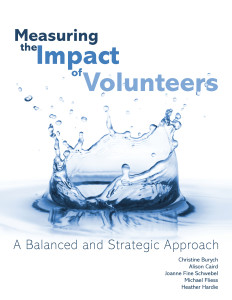 Last year, I wrote a blog in defense of police departments involving volunteers while also affirming that many police departments need drastic overhauls to be more transparent, better serve their communities and to cultivate trust with the communities they serve.
Last year, I wrote a blog in defense of police departments involving volunteers while also affirming that many police departments need drastic overhauls to be more transparent, better serve their communities and to cultivate trust with the communities they serve.
Since moving back to the USA in 2009, I’ve seen several notices from various police agencies offering a citizens academy. These aren’t mere open houses, where members of the public come in to meet a few officers, take a tour of a station, have some snacks and take a selfie with a uniformed officer. These academies take place over several weeks, with citizens receiving detailed presentations about individual programs within the department – tactical teams, narcotics investigation teams, crisis response teams, patrol, robotics, incarceration, arrests processing, etc. – and these presentations aren’t by interns or admin assistants but the officers running those programs and working on the front lines. Attendees ask questions, sometimes contentious questions (yeah, me, as usual), and officers are on-the-spot to respond.
I signed up for such a citizen’s academy by the Washington County, Oregon sheriff’s department. It’s 14 sessions, over more than two months – every Tuesday night, and also all day on three Saturdays. There are almost 30 people in the academy; by my estimation, about a third in my academy are young people wanting to be police officers, more than half are retired people interested in how the police work and who have lots of time on their hands, and the rest of us, probably just six or so people, are what I would characterize as people who want to learn more because of both or professional work and our personal politics: a mental health professional, an advocate for the mentally ill, an employee at a school, a counselor in training and… me! We’re more than halfway through the academy.
I’m taking the academy for two specific reasons: first, as a consultant and researcher regarding volunteer engagement and communications, I’m talking to organizations about community engagement. While these academies are not volunteer engagement, they are most certainly community engagement, and I wanted to see such a model up close, first hand, to see how it works and to think about ways the idea might be exported to other, non-law enforcement agencies and even overseas. I think this model of community engagement forces a level of transparency across an agency, something in which many programs are great need. It’s not something that could be instituted overnight – it would require a cultural change at most agencies to institute something like this. I also would like to see police departments in transitional countries in particular, with reputations for police corruption and abuses, instituting their own citizen academies, jail tours, job shadows and ridealongs, but I can’t advocate for that in my work overseas if I haven’t experienced it myself.
Secondly, I’m a human rights advocate, and when I look at what happened in Ferguson, Missouri in particular, I am outraged. And I think about, and sometimes see, police abuses worldwide – corruption in police departments, under the guise of fees, fines, and law enforcement (like forfeiture), happens in many places globally. Reflecting a theme I said in a blog earlier, I would love to see Black Lives Matter advocates and police reform advocates signing up for these citizen academies at police and sheriff’s departments across the USA, as well signing up for jail tours and job shadows and ride alongs with patrol officers – I think it could create more understanding and change for both the police and the community.
I am really enjoying this academy, but there are two things missing: first, there should have been a survey of participants at the very first session about their perceptions of both the sheriff’s department and police and jails in general. Then, at our last class, they should give us that survey again. It would be fascinating to see if perceptions are changed. Secondly, the problems with the sheriff’s department regarding its own officers and other staff, such as this, or this, or this, or this, or this, or this or this, or this – all happening in the last three years – have not been mentioned – just a comment about “We’ve taken a beating in the media.” We really should have heard from someone in charge of internal investigations and about efforts to create a culture of respect within the department for women, teens, immigrants, etc.
Presenters should also keep in mind that they are talking to a diverse group in terms of feelings about the police and government. For instance, a few people in the class have had incarcerated family members and others on the other side of the criminal justice system; jokes about people in the throes of a drug aren’t always appreciated by such. Presenters are certainly entitled to share their opinions – I really like knowing where they stand – but they might not want to assume the silence of some people in the room means agreement.
I’d also like to see a similar academy for officers and jail staff themselves, done by various nonprofit and government agencies that serve crime victims (and those frequently targeted by criminals), such as domestic violence shelters, mental health providers, rape counseling centers, nonprofits working with immigrants, etc., that serve those that have been arrested and incarcerated, such as nonprofits working with gang members, programs serving people with alcohol and drug abuse problems, etc., and those that are engaged in local human rights and racial justice issues That would force a level of face-to-face detail and discussion and even debate that’s very much needed in many communities.
All that said – HUGE kudos to the Washington County, Oregon’s Sheriff’s Department for doing this academy. It’s very well done, it’s a model for other police departments looking to do something like this, I’ve really enjoyed it so far, I’m really looking forward to the rest of the presentations and experiences, and I highly recommend it.
In case you are wondering, yes, I did a ride along with a deputy. I went on a shift from 6 p.m. to 4 a.m. It was fascinating. I hope I wasn’t too annoying with my many, many questions.
Update April 10, 2016: The Oregonian today published a profile of the death in 2014 of an inmate in the Washington County jail.
Update August 10, 2016: The first known citizen’s police academy held in the USA was established in Orlando in 1985, according to a report from the Criminal Justice Institute. Last year, the International Association for Chiefs of Police listed such academies as an integral way to improve community relations. Establishing these courses was also named as an action item in the final report from the President’s Task Force on 21st Century Policing. The National Citizens Police Academy Association explains the importance of the courses on its website.
Also see this info and resources regarding police corruption in other countries:
Handbook on police accountability, oversight and integrity from United Nations Office on Drugs and Crime.
Policy Briefing Paper: Gender Sensitive Police Reform in Post Conflict Societies from United Nations Women.
Ukraine replaces entire police force to beat corruption
Corrupt Mexico Police Concentrated in 10 States
Bulgaria Launches Ambitious Plan to Curb Police Corruption
Nigeria Police Extortion: Buhari Warns Against Corruption In National Force






